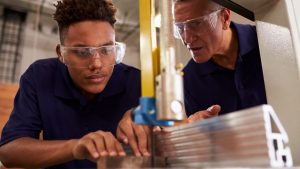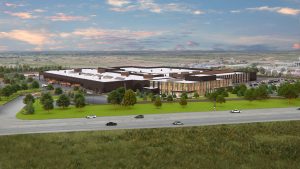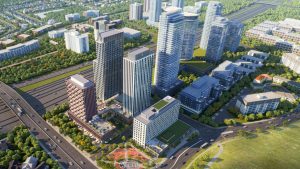A new coalition was recently launched to accelerate the development of the workforce needed to build a low-carbon Ontario, a critical piece of a green recovery, says the Canada Green Building Council (CaGBC).
Workforce 2030, supported by The Atmospheric Fund (TAF) and CaGBC, brings together a broad, cross-sectoral coalition of employers, educators and workers in the building sector in a collaboration to fast-track workforce development and capacity by collectively impacting government policy, business practices and education.
“Fundamentally, the goal of the coalition is to make sure Ontario has a workforce capable of achieving our 2030 greenhouse gas (GHG) targets,” stated Jeff Ranson, regional director for CaGBC Greater Toronto.
According to a CaGBC report being released this fall, government investment in a green recovery that prioritizes green building combined with progressive policy leadership could lead to over 600,000 direct green building jobs in Ontario and 1.5 million jobs nationally by 2030.
“This is a great opportunity to create a lot of jobs and that is true, but the reality is when you already have a tight labour market, you can’t just throw more money at green recovery without investing in the workforce at the same time,” Ranson said. “If the industry just doesn’t have the capacity to take on those projects there is no money in the world you can throw at it to make it happen.”
There are opportunities to take people from industries that have been heavily impacted by COVID and move them into jobs in the construction sector, he added.
If we don’t simultaneously invest in workforce development we are going to be slowed down,
— Jeff Ranson
Canada Green Building Council
“With COVID, it’s a huge opportunity for job creation but the money and the efforts can’t just go to driving the project, they have to go to make sure that the workforce is supported to make that transition as quickly as possible,” said Ranson.
“There are many people advocating for investment in greener buildings but if we don’t simultaneously invest in workforce development we are going to be slowed down. We are not going to be able to achieve our targets.”
Akua Schatz, vice-president of market engagement and advocacy with the CaGBC, said the council is urging the government to ensure the recovery is a green one.
“We especially need this because if we are going to meet our climate change targets we are not only going to need more people employed in the construction sector but we’re also going to need people with enhanced skills sets,” she said, adding this includes new builds as well as renovating existing buildings to perform better.
Workforce development involves accelerating three things, explained Ranson. The one most people think of is skills training and making sure that the industry is familiar with the new technology coming online to make buildings more efficient.
“There is a lot of training, there is a lot of information, whether it’s on the design side, the construction side or the building operations side, making sure that training is rolled out as widely as possible to everyone who needs it including the existing workforce and the new people coming into the industry are being trained in the best practices that are out there,” he said.
The second pillar of workforce development is about attracting talent into the industry, especially to meet GHG targets.
“We know that there are labour shortages and we know they are forecasting a lot of retirements from the industry faster than we are replacing them,” said Ranson.
“That is just the current market without factoring in the increased amount of work that is needed to be done. Making sure we are attracting people into the industry is critical across all roles from the trades to the engineers to the building operators. That has been a real challenge. A lot of that comes down to the perception of the industry and the jobs.”
The third pillar of workforce development is focused more broadly on workplace innovation and doing better with the existing workforce.
“That could be by leveraging changes to the whole process of construction,” said Ranson, adding things Building Information Modeling and the Internet of Things provide data to inform decision-making throughout the construction process.
The construction industry is often relied upon as one of the key vehicles to drive economic activity and reignite a stalled economy following a recession or depression, Schatz pointed out.
“We see this as a pivot point in the way that we do construction in Canada so that it overall keeps emissions and sustainability front and centre,” she noted.
CaGBC put together a one minute video on creating opportunity with green building which can be found here.
Workforce 2030 is funded by TAF and the Catherine Donnelly Foundation.
For more information visit workforce2030.ca.
Follow the author on Twitter @DCN_Angela.











Recent Comments
comments for this post are closed